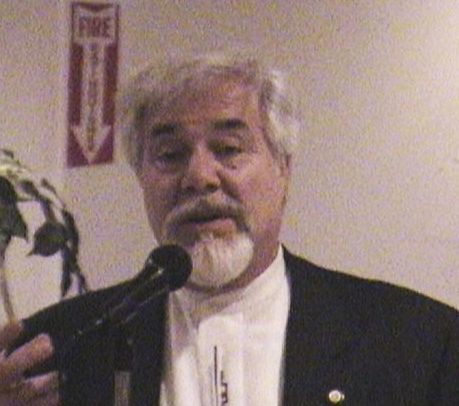ALSO POSTED ON MULTILINGUAL PAGE
http://www.iranpressnews.com/source/016338.htm
Iranians gather at Tehran U.N. offices to protest imminent execution of 3 women by the regime; guards attack protestors and brutally batter them.
Shahla Jahed , Fatemeh Haghighatpajooh, Nazanin Fatehi, Kobra Rahmanpour. (photos on site via above link).
A large number of civil and human rights activists gathered on Sunday, September 25th at 5 pm Tehran time, in front of the Tehran offices of the United Nations to protest the regime’s refusal to stop the execution of 4 women, Nazanin Fatehi, 18 years old, Kobra Rahmanpour, 25 years old, Fatemeh Haghighat-pajooh, 35 years old and Shahla Jahed, also 35.
The families of these women had requested an appointment to meet with the U.N. officials and had called for human rights and civil activists to also gather for a peaceful protest against the Islamic regime’s execution sentence for the 4 women.
Hours before the gathering of the protestors, the regime’s disciplinary guards that are now a permenant fixture in every street, in every city, town and village all across Iran, along with plain-clothes secret service agents had been increased and strategically deployed; they surrounded the nearby area streets in order to minimize attendance and intimidate people from joining up with the others who would have already been there.
Despite the presence of the disciplinary forces and plain-clothes agents, members of the families of the 4 women were able to enter UN and discuss the cases of their respective “prisoner” with the representatives of the United Nations.
They also succeeded in delivering a resolution to abolish the death sentences of each woman, requesting their immediate release and return to their families, considering the significant jail time each has already served, not to mention the monetary payment each individual has paid to the families of the so-called victims of their crimes.
This resolution was also promptly faxed to a large number of U.N. representative and rapporteurs in both New York and Geneva.
Outside on the street however, in the early moments, as the protestors gathered the agents and guards brutally attacked, beating the protestors; they arrested many, most of whom were women and girls, as well as several student leaders who had traveled from the city of Isfahan to take part in the protest.
They were taken to a precinct in northern Tehran, close to the U.N. offices. It is reported that the guards did manage to drive away hundreds more protestors who had been seen approaching.
As the crowds who managed to get past the guards and succeeded in joining up with the other protestors, plain-clothes agents pushed their way through the crowds that were present, threatening and menacing them with violence and bodily harm.
Protestors tried to ignore the agents by chanting slogans of condemnation of exeuctions of not only the 4 women but of the Islamic regime’s constant reign of terror and intimidation by execution in general. At this time, there is no further news of those who were arrested.
http://www.iranpressnews.com/source/016227.htm
Political prisoners lives in danger
Mullah Dorri-Najafabadi
Mullah Ghorban-Ali Dorri-Najafabadi, the Islamic Republic’s general attorney, describes the murders of the two young activists and political prisoners Akbar Mohammadi and Valiollah Fayz-Mehdavi, [who were tortured to death in the Islamic regimes’ prisons in late July and early September] as appropriate, goes on to specify: “Not only is this a warning, it should be absolutely construed as a threat [to all Iranians opposing the Islamic regime].
The attorney general has also stated very openly that he supported the murders of the Iranian opposition leaders and intellectuals in Iran who were brutally murdered throughout the ‘90’s, in what became known in Iran as the Chain Murders.
He said that the bloodbath slaughter of leader of the Pan-Iranianist movement, Darioush Forouhar and his wife Parvaneh – whose breasts were even sliced off – in their home, as well as the secret murders of journalists and writers like Mohammad Mokhtari and Mohammad-Jafar Pouyandeh, are not only justified but necessary.
Dorri-Najafabadi who mocks the legal process, and arrogantly describes the nature of the individual’s rights as ludicris, also asserts that the murder of the Islamic order’s opponents and dissidents, is necessary and an “act of grace”.
http://www.iranpressnews.com/source/016235.htm
Russia sells 5 more passenger planes to the Islamic Republic
Despite the repeated crashes of Russian-made planes in Iran, Russian media announced that the Islamic Republic intends to purchase yet another five passenger planes from Russia.
The regime-run news agency ISNA, quoting the Russian news agency, Interfax reported that authorities from Ilyushin Finance company reported that Russia will hand over five TU- 204 passenger airplanes to Iran Tour company.
The Russian Company officials announced that this contract valued at about $180 million is scheduled to be signed just before December 15th and the delivery time has been slated for early 2008. The same officials also announced that the Islamic Republic intends to lease two II-96 planes to test fly; should they have a positive impression of the plane’s performance they have announced that they would also purchase several of these models as well.
Several months ago the French newspaper Le Monde, in an incisive article against Russia’s double-dealings with Tehran’s regime wrote: "While Moscow says it is making an attempt to get the regime in Tehran to accept Russia's proposal for the enrichment of Uranium on Russian soil, Russian arms companies are involved in transaction and sales of arms to the Islamic regime. (Alan: pot calling the kettle black). France has opposed financial sanctions on Iran in the UN because about 28% of the loans to iran are by French banks!!)
On February 9th, the Director of the governmental agency for military and technical cooperation, Mikhail Dmitriev, confirmed that Russia had in fact delivered an anti-air defense system to the regime in Tehran. Dmitriev specified that there is no other contract however Russia is bound by its own guarantees and must satisfy its commitments.
Last December Russian media reported that Russia intends to deliver 49 Tor-M1 missiles priced at $700 million to the Islamic regime. Based on reports in Russian newspapers these missiles are slated to be delivered by Fall 2006.
http://www.iranpressnews.com/source/016256.htm
U.S. company prosecuted for export of sensitive products to Iran
According to the regime-run news agency, MEHR, a U.S. computer equipment production company was indicted by the U.S. attorney general’s office for exporting equipment to the Islamic Republic.
U.S. Attorney General announced: "Supermicro Computer, based in San Jose has been indicted for breaching security regulations, for exporting equipment that was specifically banned to export to Tehran’s regime.”
Officials from the office of the attorney general, Alberto Gonzales reported that in the years 2001 and 2002 Supermicro Computer exported 300 motherboards to a UAE company which then exported those directly to Iran which lead up to Supermicro Computer being fined $150,000; the company has agreed to pay the fine.
Supermicro computer confessed that in the years 2001 and 2002 approximately $27,600 worth of equipment was exported to Iran; for security purposes the U.S. department of commerce had banned such exports to countries such as Iran. The U.S. department of commerce also noted that in February 2004 with the new export control laws, Supermicro Computer was prohibited from further exports to Iran.
http://www.iranpressnews.com/source/016259.htm
Seven to be executed in the province of Sistan-Baluchistan
The human-rights-violating Islamic regime has once again issued the death sentences of seven residents of the province of Sistan-Baluchestan (south east Iran, bordering on Pakistan) . Also during the second week of September the Islamic regime publicly hung yet another individual in the town of Zabol, in that province.
On Wednesday September 20th, the regime-run news agency, IRNA, reported that during the police raid of a neighborhood in the town of Iranshahr, the guards also murdered one of the local residents.
In recent months, the Islamic regime has either publicly executed hundreds of activists and anti-regime opponents in villages, small towns and cities in this province or actively sought to kill them during local clashes.
The judiciary in Tehran has also issued the order of execution for a 40-year-old woman who due to the lack of any family or relations should be executed for giving the impression of being a “loose woman”. Her execution sentence was approved by the Islamic regime’s supreme court in Tehran.
http://www.iranpressnews.com/source/016274.htm
Mullah organizations actively financed the Lebanese Hezbollah
Shrine of Imam Reza
The regime-run news agency, ILNA reported: “Astan Ghods Razavi (a.k.a. AGR) paid out $40,000 [during July and August] to the Lebanese Hezbollah.
This amount was paid by check via the management of Astan Qods Razavi, to account number 33600 of the Melli Bank at the holy Mash’had branch. This transaction was organized and overseen by Ayatollah Vaez-Tabasi, representative of the Supreme Leader (Ayatollah Khamenei) in the province of Khorasan; Vaez-Tabasi who is also the ‘chief ’ of AGR, added this amount to the cash Add-0n from AGR employees who are "champions of righteous".
While lending their full support to those brave Lebanese resistance fighters of Hezbollah fighting the invaders of the Zionist regime, we all pray for the decisive victory of the global Islamic movement over international arrogance; we announce our total and eternal readiness for any necessary help and assistance.”
The office of public relations of AGR also announced: “Said account number remains open and anyone can make donations.”
Astan Ghods Razavi which is also the name for the Shrine of Imam Reza is the largest private firm in Iran which conveniently enjoys a non-profit status. This organization owns many varied and profiteering industrial conglomorates, that oversees everything from food groups to computer software companies, to tobacco, etc. AGR also heads up other small foundations such as the various holy shrines around Iran, starting with the Imam Reza shrine in the city of Mashhad.
http://www.iranpressnews.com/source/016334.htm (see photos on this link)
Inhumane Islamic regime hangs a teenage boy for crime committed as child
The regime-run news agency, MEHR, reported that the Islamic regime’s judiciary publicly hanged a teenage boy, only known as Vaheed, on Wednesday, September 20th, for a murder he had allegely committed as a child.
Vaheed had recently turned 18. The execution of another teenager, also identified as Sina, was suspended for two months.
Sina who also recently turned 18 was accused of murdering a relative when he was a child. Sina’s relatives, called for the temporary suspention of the exeuction while Sina literally stood with the noose around his neck.
Under the Islamic republic’s legal statute, boys above the age of fifteen are considered adults and could be convicted of capital crimes. Under increasing international pressure for violations of the children’s rights, the inhumane Islamic regime keeps convicted children in juvenile prisons and issues court verdicts only after they turn 18 so as to carry out sentences that would have be handed out if the defendants were adults.
http://www.iranpressnews.com/source/016283.htm
Regime’s own journalist/TV producer arrested
According to blogger and activist, Kianoosh Sanjari, reporting from Iran, Pourya Nejad-Veysi, journalist and segment producer for the Islamic Republic’s own television news reports has been arrested.
Nejad-Veysi was collared on August 22nd by secret police agents of the Ministry of Intelligence and Security of the Islamic regime’s branch in Islamshahr, a Tehran suburb.
The journalist and TV producer, was originally detained for 20 days in the NAJA detention center (the secret police bureau for combating social corruption) and was physically and psychologically tortured. Among other charges leveled against him, his interogators accused him of spying, but the journalist rejected those charges.
Branch one of the revolutionary court of Islamshahr has sentenced Nejad-Veysi with the high crime of “taking action against the security of the regime” and has sent him to Tehran’s infamous Evin prison to serve his term; he is being detained in the deplorable ward 350 of said prison.
The journalist is responsible for exposing some of the most horrifying crimes commited by the various Mullah factions and their mafia-like extortions. One of his famous exposes was about the distribution and sale of meat that was known to have been contaminated that originally aired on the Islamic regime’s channel 2; he also did reports on homeless women, combatting addiction in Iran, etc.
However this journalist has a long track record of working for and promoting the Islamic regime’s rule of law as well.
http://www.iranpressnews.com/source/016318.htm
Imprisonment and flogging for a political activist in province of Kurdistan
The organization for the defense of human rights in the province of Kurdistan reported that the high tribunal of the city of Saghez confirmed the prison sentence and flogging for their organization’s member and political activist, Loghmon Mehri.
This activist was charged with taking part in protests for the rights of women in front Tehran University in June of 2005. He was sentenced to 6 months in prison and 25 lashes; his case was sent to the court of appeals and confirmed by the Supreme Court recently. His was served with the order last week.
Mehri was also charged with taking part in civil protests during the summer of 2005 and for that the revolutionary court in his hometown of Saghez sentenced him to yet another 5 years in prison; that sentence is currently being evaluated by the court of appeals in the Kurdistan.
In addition he was recently threatened and harrassed by the secret police agents of the ministry of intelligence and security for his membership in the organization for the defense of human rights.
http://www.iranpressnews.com/source/016309.htm
Former secretary of Amir-Kabir University student association, Keyvan Ansari, arrested.
Abbas Hakim-zadeh, a member of the central committee of said university’s student association announcing the news, told the reporter from the regime-run news agency ILNA: “On Monday, September 17th, Ansari was arrested in front of his house; he was transported to the central committee offices of the student association and after the secret police agents tossed the offices of the central committee, they took several documents with them.
The nature of the arrest, the place of his detention and the charges against Ansari have not been announced and he has not, as of yet been permitted to contact his family; as such they too are worried and being kept in the dark.”
Français
http://www.iranpressnews.com/french/
samedi 23 septembre 2006
L'Iran frappera l'ennemi "comme la foudre" en cas d'attaque
TEHERAN – AFP- L'Iran frappera l'ennemi "comme la foudre" s'il est attaqué, a déclaré vendredi le vice-président Parviz Davoudi lors d'un discours prononcé à l'occasion d'un défilé des forces armées à Téhéran.
"Nous voulons la paix mais nous lançons une mise en garde, les puissances expansionnistes ne doivent pas penser à une agression contre l'Iran car nous pouvons défendre la patrie et l'islam", a déclaré M. Davoudi dont le pays est en crise avec l'Occident au sujet de son programme nucléaire.
"Nos lions sont si puissants qu'ils peuvent frapper comme la foudre l'ennemi et le détruire" en cas d'attaque, a-t-il ajouté en parlant des forces armées iraniennes.
Ce défile marque l'anniversaire du déclenchement de la guerre Irak-Iran en 1980, qui a duré huit ans et fait environ un million de morts de part et d'autres selon les estimations occidentales.
"Nos forces armes n'ont pas besoin d'armes atomiques pour montrer leur puissance, qui est basée sur notre croyance", a-t-il dit.
Il a ajouté que lors des récentes manoeuvres militaires, "les forces armées iraniennes ont montré leur puissance" en utilisant des armes et des moyens technologiques "qui étaient jusque-là le monopole des grandes puissances".
L'Iran a notamment affirmé avoir testé avec succès des missiles et des avions sophistiqués lors des récentes manoeuvres.
M. Davoudi a également fustigé les grandes puissances qui "osent dire qu'elles n'ont pas confiance dans notre programme nucléaire pacifique et parlent d'inquiétudes".
"Nous avons dit que l'arme atomique n'a pas de place dans notre doctrine de défense et notre guide suprême (l'ayatollah Ali Khamenei) a déclaré à plusieurs reprises que l'utilisation de l'arme atomique était haram (proscrit par l'islam)", a-t-il ajouté.
"L'utilisation de la technologie nucléaire à des fins pacifiques est notre droit absolu conformément au Traité de non prolifération (TNP) et nous agissons en conformité avec le TNP", a-t-il poursuivi.
Dans un entretien au magazine américain Time publié cette semaine, le président iranien Mahmoud Ahmadinejad a assuré qu'il ne craignait pas une attaque américaine pour détruire les installations nucléaires de son pays.
Pour Washington, un Iran doté de l'arme atomique reste une perspective inacceptable et les Etats-Unis ont toujours refusé d'exclure l'option militaire contre Téhéran.
Selon Time, des frappes américaines contre l'Iran, si elles devaient avoir lieu, pourraient viser jusqu'à 1.500 sites, nucléaires ou de missiles, et impliquer notamment des bombardiers B-52 et des missiles de croisière Tomahawk.
Le vice-président iranien a également demandé le départ des forces américaines d'Irak.
"La présence des Etats-Unis est source d'insécurité en Irak, les Etats-Unis doivent mettre fin à l'occupation car pour les peuples de la région la démocratie (américaine) est synonyme de massacre de leurs enfants", a-t-il poursuivi.
Réunion des diplomates des Six sur des sanctions contre l'Iran
NEW YORK – AFP- Les six grandes puissances engagées dans les discussions sur le dossier nucléaire iranien étaient réunies vendredi pour discuter des sanctions qui seraient éventuellement imposées à l'Iran s'il refusait de suspendre l'enrichissement de l'uranium, a-t-on appris auprès d'un haut responsable américain.
Le numéro trois du département d'Etat, Nicholas Burns, a précisé à des journalistes que ses discussions avec ses homologues de Grande-Bretagne, Chine, France, Allemagne et Russie porteraient sur la première série de sanctions progressives qui pourraient être imposées à l'Iran.
"Nous nous réunissons cet après-midi (...) pour discuter des sanctions qui pourraient figurer dans la première série de sanctions, si cela s'avérait nécessaire", a précisé M. Burns, secrétaire d'Etat adjoint aux Affaires politiques.
Le responsable américain a précisé avoir peu d'espoir de parvenir à un accord dès cette semaine sur une première série de mesures à l'encontre de l'Iran, alors que le diplomate en chef de l'Union Européenne, Javier Solana, doit rencontrer le chef des négociateurs iraniens, Ali Larijani, dans une capitale européenne.
"Soyons réalistes. Je pense que tant que nous n'aurons pas pris la décision que l'Iran a rejeté l'offre, on ne verra pas de décision sur des sanctions, mais les ministres nous ont demandé de nous rencontrer, et nous nous réunissons donc à 14H45" (18H45 GMT), a-t-il ajouté.
"Nous avons encore des divergences", a-t-il reconnu. "Je ne m'attends pas à ce que nous parvenions à un accord, mais nous allons discuter".
Le ministre russe des Affaires étrangères, Sergueï Lavrov, a affirmé jeudi soir à la tribune de l'ONU la nécessité de régler les problèmes de non prolifération nucléaire par la négociation, en laissant de côté "l'obsession des sanctions".
L'Iran figurera aussi à l'agenda du dîner des ministres des Affaires étrangères du G8 prévu vendredi, a poursuivi M. Burns. L'Italie et le Japon, qui ne font pas partie du groupe des Six mais ont d'importants intérêts économiques et commerciaux en Iran, participeront à ce dîner.
Les Etats-Unis poussent à l'adoption de sanctions contre l'Iran après que Téhéran a ignoré une demande du Conseil de sécurité de l'ONU de suspendre au 31 août ses activités d'enrichissement d'uranium avant toute négociation sur son programme nucléaire.
Téhéran affirme que ce programme est purement pacifique mais Washington et ses alliés le soupçonnent de vouloir se doter de l'arme nucléaire.
Des sanctions contre l'Iran pourraient viser balistique et nucléaire
NEW YORK - De premières sanctions internationales contre l'Iran en cas d'échec des discussions sur son programme nucléaire, pourraient viser les échanges et la coopération liés à ses activités nucléaires et ses programmes de missiles balistiques, a-t-on appris vendredi de source diplomatique à New York.
Ce sujet a été au centre d'une réunion de hauts diplomates des six puissances (Etats-Unis, Russie, Chine, France, Grande-Bretagne, Allemagne) engagées dans les discussions sur le dossier nucléaire iranien, en marge de l'Assemblée générale de l'ONU.
"Le coeur des sanctions toucherait tout ce qui est biens, services et personnes liés au balistique et au nucléaire", a déclaré à des journalistes une source proche des discussions.
Outre les livraisons d'équipements, cela pourrait aussi concerner les voyages de physiciens et scientifiques, ou le financement de programmes de recherche par exemple, a ajouté ce haut diplomate européen, sous couvert de l'anonymat.
Les Russes, souvent conciliants avec l'Iran, sont plus restrictifs que les Américains, qui plaident avec insistance depuis des mois pour des sanctions. Mais à l'issue de la réunion, "on a le sentiment qu'il y aura un accord" et "que l'on n'est pas dans une logique de confrontation USA-Russie", a-t-il estimé.
Moscou insiste notamment pour que ces sanctions soient "réversibles" en cas de changement d'attitude de Téhéran, et ne veut pas de sanctions ciblées contre des responsables du régime (interdiction de voyager, gel des avoirs à l'étranger) dans un premier train de mesures.
L'aide de la Russie à la construction de la centrale iranienne de Bouchehr ne serait pas remise en cause par ces sanctions, a précisé ce diplomate.
Ces premières sanctions, qui demanderaient une nouvelles résolution du Conseil de sécurité de l'ONU, seraient éventuellement imposées à l'Iran s'il refusait de suspendre l'enrichissement de l'uranium, une activité à finalité civile ou militaire.
Le groupe des six puissances a décidé mardi soir de donner une nouvelle chance à la négociation, en attendant le résultat d'une nouvelle rencontre entre le diplomate en chef de l'Union européenne, Javier Solana, et le principal négociateur iranien, Ali Larijani.
Téhéran a annoncé que M. Larijani rencontrerait M. Solana la semaine prochaine en Europe, sans donner de date ni de lieu précis.
Le numéro trois du département d'Etat américain, Nicholas Burns, avait indiqué avant l'ouverture de la réunion que ses discussions avec ses homologues porteraient sur la première série de sanctions progressives qui pourraient être imposées à l'Iran.
Le responsable américain avait toutefois précisé avoir peu d'espoir de parvenir à un accord avant de connaître le résultat de la prochaine rencontre Larijani-Solana.
Le ministre russe des Affaires étrangères, Sergueï Lavrov, a affirmé jeudi soir à la tribune de l'ONU la nécessité de régler les problèmes de prolifération nucléaire par la négociation, en laissant de côté "l'obsession des sanctions".
Les Etats-Unis poussent à l'adoption de sanctions contre l'Iran après que Téhéran a ignoré une demande du Conseil de sécurité de suspendre au 31 août ses activités d'enrichissement d'uranium avant toute négociation sur son programme nucléaire.
L'Iran affirme que ce programme est purement pacifique mais Washington et ses alliés le soupçonnent de vouloir se doter de l'arme nucléaire.
Moscou et Pékin discutent de sanctions contre l'Iran avec les Occidentaux
LE MONDE
Même si le haut représentant de l'Union européenne (UE) pour la politique étrangère, Javier Solana, s'apprête à renouer le dialogue avec Téhéran, les grandes puissances étudient la mise au point de sanctions qui pourraient frapper les programmes balistique et nucléaire de l'Iran. Malgré les démentis catégoriques de son président, Mahmoud Ahmadinejad, ce pays est toujours soupçonné de chercher à mettre au point une bombe atomique.
Selon une source occidentale proche des discussions, le sujet a été évoqué, vendredi 22 septembre, lors d'une réunion qui rassemblait des diplomates de haut rang américain, français, britannique, allemand, russe et chinois.
Selon cette source, si la reprise du dialogue avec l'Iran, attendue aux alentours du 27 septembre, échoue, les cinq membres permanents du Conseil de sécurité (Etats-Unis, France, Russie, Royaume-Uni et Chine) et l'Allemagne devraient s'accorder "sans trop de problèmes" sur des sanctions ciblées.
"Le coeur du régime de sanctions toucherait au nucléaire et au balistique", affirme le diplomate, qui évoque une interdiction de financer ces programmes, un embargo sur les transferts de technologie, d'équipements, de services ou de personnels dans ces domaines et une interdiction de voyager à l'étranger pour les scientifiques iraniens.
Au cours de la réunion, qui se tenait en marge de l'Assemblée générale de l'ONU, "les Russes ont accepté de discuter des sanctions" et, toujours selon cette source, "la Chine ne s'y est pas opposée". Il n'a pas été possible, vendredi soir, de vérifier ces informations auprès des deux pays.
"A PETITS PAS"
Les Etats-Unis, représentés par le numéro trois du département d'Etat, Nicholas Burns, "ont demandé beaucoup plus" de sanctions, poursuit ce diplomate, et notamment une interdiction de voyager à l'étranger pour les dirigeants iraniens, dont les avoirs devraient aussi, selon Washington, être gelés. Aucun projet de résolution n'a toutefois été déposé.
Moscou aurait refusé d'aller aussi loin et exigé une dérogation aux sanctions pour tout ce qui touche à la centrale nucléaire de Bouchehr, construite par la Russie en Iran. Les sanctions "doivent être prises à petits pas et de façon réversible", affirme cette source, selon laquelle les divergences entre les six pays "portent davantage sur le rythme et l'étendue que sur le principe des sanctions".
Téhéran a ignoré les menaces de sanctions votées, le 31 juillet, par le Conseil de sécurité qui lui donnait un mois pour arrêter l'enrichissement d'uranium. Mais à l'initiative de Jacques Chirac, les grandes puissances ont accepté de relancer une dernière fois le dialogue en ne faisant plus de la suspension de l'enrichissement un préalable à toute négociation.
Selon le scénario français, les deux camps doivent commencer à discuter d'un ordre du jour des négociations qui s'ouvriraient ensuite par un double "geste de bonne volonté" : les Occidentaux accepteraient de mettre entre parenthèses leurs projets de sanctions, et l'Iran suspendrait ses activités suspectes.
En dépit des efforts insistants du chef de la diplomatie européenne, Javier Solana, le négociateur iranien chargé du dossier nucléaire, Ali Larijani, ne s'est pas rendu à New York, entre le 18 et le 23 septembre, pour entamer les discussions. Selon des diplomates, la rencontre pourrait avoir lieu en milieu de semaine en Europe, mais ni la date ni le lieu n'ont été fixés.
Les fuites concernant le débat sur les sanctions pourraient être destinées à faire pression sur l'Iran pour qu'il reprenne le dialogue. Selon des sources diplomatiques concordantes, les Etats-Unis ont donné aux Européens jusqu'au début du mois d'octobre pour obtenir des résultats, avant de déposer officiellement leurs demandes de sanctions au Conseil de sécurité.
lundi 25 septembre 2006
Iran: le chef du nucléaire iranien à Moscou pour discuter de la centrale de Bouchehr
MOSCOU (AFP) - Le chef de l'Organisation iranienne de l'énergie atomique, Gholamreza Aghazadeh, est arrivé lundi en fin de matinée à Moscou pour discuter de l'achèvement de la centrale nucléaire iranienne de Bouchehr, a indiqué à l'AFP la société russe Atomstroïexport chargée de la construction de la centrale.
Le responsable iranien doit discuter avec son homologue russe Sergueï Kirienko et le président d'Atomstroïexport Sergueï Chmatko de la date de démarrage de la centrale et de l'envoi du combustible nucléaire pour l'approvisionner, selon l'agence officielle iranienne Irna.
La rencontre est prévue à 16H00 locales (12H00 GMT).
"Au cours de cette visite, nous allons discuter des moyens de supprimer les obstacles existant à l'achèvement rapide de la centrale atomique et nous allons nous entendre sur la date de l'inauguration et de l'envoi du combustible", a dit un adjoint de M. Aghazadeh, Mohammad Saïdi.
"Bien que la Russie, à l'époque d'(Alexandre) Roumiantsev (ex-directeur de l'Agence fédérale russe de l'énergie atomique Rosatom, ndlr), ait donné à l'Iran un engagement écrit sur la date de l'envoi du combustible, il ne s'est pas concrétisé", a ajouté M. Saïdi.
La centrale, un projet de près d'un milliard de dollars, doit être achevée "en septembre 2007" et commencer à produire de l'énergie "en novembre 2007", avait indiqué la semaine dernière le porte-parole de l'Agence fédérale russe de l'énergie atomique (Rosatom), Sergueï Novikov.
Selon M. Novikov, "la Russie peut livrer du combustible nucléaire à l'Iran en mars prochain, six mois avant la date du lancement de la centrale en septembre".
Le projet de la centrale de Bouchehr a été lancé par l'ancien Shah d'Iran Mohammad Reza Pahlavi dans les années 70. La compagnie allemande Kraftwerk-Union, filiale de Siemens, avait été choisie pour sa construction, mais s'est retirée au moment de la révolution islamique de 1979.
Moscou a pris le relais en signant un contrat avec Téhéran en 1995 pour terminer la construction de la centrale.
La Russie a conclu avec l'Iran en 1995 un accord pour livrer la centrale nucléaire de Bouchehr (sud), mais le projet a pris du retard, notamment sous la pression des autorités américaines.
La Russie a notamment conclu avec l'Iran, sous la pression de Washington, un accord afin que le combustible nucléaire d'origine russe pour Bouchehr soit retourné en territoire russe une fois usagé, afin d'éviter des risques de détournement à des fins militaires.
Ehoud Olmert aurait rencontré un très haut responsable saoudien, selon un journal israélien
JERUSALEM (AP) - Le Premier ministre Ehoud Olmert aurait rencontré un haut responsable saoudien, et peut-être même le roi Abdallah lui-même il y a une dizaine de jours, rapporte lundi le quotidien israélien "Yediot Ahronot".
Le journal cite plusieurs responsables israéliens anonymes selon lesquels Olmert a rencontré le roi, tandis que d'autres rapportent qu'il a rencontré un haut responsable dans l'entourage du roi.
Dans un entretien publié sur le site Internet du "Yediot Ahronot" lundi, le Premier ministre israélien a affirmé qu'il n'avait pas rencontré le roi saoudien, mais n'a pas nié s'être entretenu avec un haut responsable du royaume.
"Je n'ai pas rencontré le roi saoudien et je n'ai rencontré personne qui puisse entraîné une agitation médiatique", a-t-il déclaré.
Parallèlement, un haut responsable saoudien s'exprimant sous couvert de l'anonymat a formellement démenti l'information du "Yediot Ahronot". "Il s'agit d'une invention née de leur imagination", a assuré ce responsable.
Israël et l'Arabie saoudite n'ont par de relations diplomatiques, mais le "Yediot Ahronot" a rapporté la semaine dernière que les deux pays entretiennent des contacts secrets depuis le mois de juillet pour parler du processus de paix avec les Palestiniens et du dossier iranien.
Ehoud Olmert aurait rencontré un très haut responsable saoudien, selon un journal israélien
JERUSALEM (AP) - Le Premier ministre Ehoud Olmert aurait rencontré un haut responsable saoudien, et peut-être même le roi Abdallah lui-même il y a une dizaine de jours, rapporte lundi le quotidien israélien "Yediot Ahronot".
Le journal cite plusieurs responsables israéliens anonymes selon lesquels Olmert a rencontré le roi, tandis que d'autres rapportent qu'il a rencontré un haut responsable dans l'entourage du roi.
Dans un entretien publié sur le site Internet du "Yediot Ahronot" lundi, le Premier ministre israélien a affirmé qu'il n'avait pas rencontré le roi saoudien, mais n'a pas nié s'être entretenu avec un haut responsable du royaume.
"Je n'ai pas rencontré le roi saoudien et je n'ai rencontré personne qui puisse entraîné une agitation médiatique", a-t-il déclaré.
Parallèlement, un haut responsable saoudien s'exprimant sous couvert de l'anonymat a formellement démenti l'information du "Yediot Ahronot". "Il s'agit d'une invention née de leur imagination", a assuré ce responsable.
Israël et l'Arabie saoudite n'ont par de relations diplomatiques, mais le "Yediot Ahronot" a rapporté la semaine dernière que les deux pays entretiennent des contacts secrets depuis le mois de juillet pour parler du processus de paix avec les Palestiniens et du dossier iranien.
Le président irakien se prononce pour une présence américaine à long terme en Irak
WASHINGTON - AFP- Le Président irakien, Jalal Talabani, s'est prononcé pour une présence militaire américaine à long terme en Irak, affirmant que son pays aurait besoin de la présence de bases américaines aériennes permanentes afin d'empêcher les "interférences étrangères".
"Je pense que nous aurons besoin des forces américaines pendant longtemps, même de deux bases militaires pour empêcher les interférences étrangères", a affirme Jalal Talabani au journal Washington Post. "Je ne demande pas d'avoir 100.000 soldats américains, 1O.000 et deux bases aériennes seront suffisants", a-t-il ajouté.
Le president a indiqué que les bases pourraient être installées au Kurdistan, région autonome du nord de l'Irak qui est auto-gouvernée depuis la guerre du Golfe de 1991.
Mais il a également suggéré que la population de confession sunnite serait favorable à une présence militaire américaine à long terme en Irak.
"Dans ceraine endroits, les sunnites veulent que les Américains restent", a-t-il dit. "Les sunnites pensent maintenant que le principal danger vient de l'Iran à l'heure actuelle".
Alors que le maintien d'un fort contingent militaire américain en Irak est impopulaire aux Etats-Unis, un haut responsable militaire américain, le général John Abizaid, avait affirmé la semaine dernière qu'il ne fallait pas compter sur une réduction de troupes --actuellement 147.000 hommes-- avant le printemps.
Le général Abizaid avait pourtant prédit il y a six mois une baisse de plusieurs milliers de soldats des effectifs américains en Irak. Mais, selon lui, l'explosion de violence et le retard dans la mise en place du gouvernement irakien ont obligé les Etats-Unis à repousser cette échéance.
Centrale Bouchehr: l'Iran peut finir lui-même la construction
MOSCOU - AFP- Un haut responsable du nucléaire iranien, Gholamreza Aghazadeh, en visite lundi à Moscou, a affirmé que son pays pouvait lui-même achever la construction de la centrale nucléaire de Bouchehr si les Russes n'étaient pas capables de le faire, selon les médias iraniens.
Le chef de l'Organisation iranienne de l'énergie atomique (OIEA) a eu un premier entretien à Moscou avec son homologue de l'Agence fédérale russe de l'Energie atomique (Rosatom), Sergueï Kirienko, au sujet de l'achèvement de la centrale nucléaire de Bouchehr (sud de l'Iran) construite par la société russe Atomstroïexport. Ils doivent reprendre leurs discussions mardi.
"Dans le cas où le constructeur russe est dans l'incapacité de finir le projet de Bouchehr, l'Iran est prêt à le finir lui-même", a dit M. Aghazadeh aux journalistes iraniens l'accompagnant et dont les propos ont été reproduits par l'agence semi-officielle iranienne Mehr.
"De notre point de vue, nous pouvons finir la centrale dans une période de six mois", a-t-il dit, démentant les informations sur un "accord avec la partie russe pour l'entrée en fonction de la centrale en novembre 2007".
La semaine dernière, le porte-parole de Rosatom, Sergueï Novikov, avait indiqué que la centrale, un projet de près d'un milliard de dollars, devrait être achevée "en septembre 2007" et commencer à produire de l'énergie "en novembre 2007".
"Nous pensons que cinq ou six mois suffisent pour finir le projet. Mais malgré les faiblesses de l'entrepreneur russe et vu que le projet a avancé à 90%, nous allons continuer de travailler avec eux", a dit M. Aghazadeh.
Selon lui, "l'entrepreneur russe est très faible et nous allons lors des réunions (à Moscou) insister sur ses difficultés". "Nous savions dès le départ qu'il était faible mais il n'y a pas d'autres entrepreneurs russes pour construire des centrales nucléaires et nous n'avions pas le choix".
Mohammad Saïdi, le vice-président de l'OIEA qui accompagne M. Aghazadeh, a indiqué que les deux parties devraient "décider demain (mardi) de la date définitive du démarrage de la centrale et de la livraison du combustible".
Selon M. Novikov, "la Russie peut livrer du combustible nucléaire à l'Iran en mars prochain, six mois avant la date du lancement de la centrale en septembre".
Interrogé sur la décision de donner à l'époque aux Russes la charge de finir la construction de la centrale commencée par les Allemands, M. Aghazadeh a dit: "Si j'avais été responsable à l'époque, je n'aurais pas pris une telle décision et j'aurais proposé la construction d'une nouvelle centrale".
Le projet de la centrale de Bouchehr a été lancé par l'ancien Shah d'Iran Mohammad Reza Pahlavi dans les années 1970. La compagnie allemande Kraftwerk-Union, filiale de Siemens, avait été choisie pour sa construction, mais s'est retirée au moment de la révolution islamique de 1979.
Moscou a pris le relais en signant un contrat avec Téhéran en 1995 pour terminer la construction de la centrale de Bouchehr (sud de l'Iran), mais le projet a pris du retard, notamment sous la pression des autorités américaines.
La Russie a notamment conclu avec l'Iran, sous la pression de Washington, un accord afin que le combustible nucléaire d'origine russe pour Bouchehr soit retourné en territoire russe une fois usagé, afin d'éviter des risques de détournement à des fins militaires.
 Al-Hajj Ghazi Khankan was in the news recently for his meeting (and hugging) Rabbi Yisroel Dovid Weiss of Neturei Karta International on August 22.
Khankan previously served as executive director of CAIR-NY and is currently CAIR-NY's senior advisor.
His resume which was available online at: Khankan resume has been pulled!! However, it is shown below as it was on the link.
AL-HAAJ GHAZI Y. KHANKAN
Director of Interfaith and Communication
Islamic Center of Long Island
Al-Haaj Ghazi Y. Khankan has been "The Voice of Al-Islaam" in America since 1967. He has lectured across the United States and produced radio and television programs dealing with Al-Islaam, the religion, civilization, and complete way of life.
His main concern is to correct the distorted image of Al-Islaam in the West.
Al-Haaj Khankan studied at the Lycee Francaise, at Aleppo College in Syria and at the American University of Beirut, Lebanon. In the United States, he completed his education at the University of Southern California, Los Angeles in the fields of Business Administration and International Relations (1954-60).
Al-Haaj Ghazi Y. Khankan was the director of the Organization of Arab Students in U.S. and Canada (1960-64). He is the President of the National Council on Islamic Affairs. He is a member of the Islamic-Roman Catholic Dialogue, the Jewish-Christian-Islamic Commission of the National Conference, American Muslims and Jews in Dialogue, The Long Island Multi-Faith Forum, The Long Beach Clergy Association, The Long Island Majlis Ash-Shura, Islamic Leadership Council of New York and several other interfaith groups.
As Director of "The Voice of Al-Islaam Broadcasting" in New York, Al-Haaj Khankan has met with and interviewed many Muslim and Arab leaders during his travels throughout the Middle East and U.S.A.
He is a member of the N.Y. State Advisory Committee of the U.S. Commission on Civil Rights, Washington, DC. and in November of 1996 has been designated by Nassau County Executive, Mr. Thomas S. Gulotta to serve as his Coordinator within the Muslim Community on Long Island.
In 1995 and 1996, Al-Haaj Ghazi Y. Khankan was the Muslim guest on Cablevision Channel 25 TeLIcare T.V. program: "Father Tom & Religious Leaders".
Beginning in 1998, Advisor on Islamic Affairs at the Long Island University, C. W. Post Campus, Long Island, NY.
Listed on an on-call clergy list of North Shore University Hospital at Glen Cove, NY and the Nassau County Medical Center at East Meadow, NY.
Former Executive Director and presently Senior Advisor to CAIR-NY. Recipient of honor award from local and national organizations.
He is a U.S. citizen and has lived in the U.S. since 1954.
He has apparently built his Islamic reputation with Hamas related matters but more recently is reported to be taking a strong lobbying position for the Hezbollah in the USA and apparently should register accordingly as a foreign "agent" - not a "preacher".
Take a really good look at him and beware! Extremely dangerous for the USA.
Al-Hajj Ghazi Khankan was in the news recently for his meeting (and hugging) Rabbi Yisroel Dovid Weiss of Neturei Karta International on August 22.
Khankan previously served as executive director of CAIR-NY and is currently CAIR-NY's senior advisor.
His resume which was available online at: Khankan resume has been pulled!! However, it is shown below as it was on the link.
AL-HAAJ GHAZI Y. KHANKAN
Director of Interfaith and Communication
Islamic Center of Long Island
Al-Haaj Ghazi Y. Khankan has been "The Voice of Al-Islaam" in America since 1967. He has lectured across the United States and produced radio and television programs dealing with Al-Islaam, the religion, civilization, and complete way of life.
His main concern is to correct the distorted image of Al-Islaam in the West.
Al-Haaj Khankan studied at the Lycee Francaise, at Aleppo College in Syria and at the American University of Beirut, Lebanon. In the United States, he completed his education at the University of Southern California, Los Angeles in the fields of Business Administration and International Relations (1954-60).
Al-Haaj Ghazi Y. Khankan was the director of the Organization of Arab Students in U.S. and Canada (1960-64). He is the President of the National Council on Islamic Affairs. He is a member of the Islamic-Roman Catholic Dialogue, the Jewish-Christian-Islamic Commission of the National Conference, American Muslims and Jews in Dialogue, The Long Island Multi-Faith Forum, The Long Beach Clergy Association, The Long Island Majlis Ash-Shura, Islamic Leadership Council of New York and several other interfaith groups.
As Director of "The Voice of Al-Islaam Broadcasting" in New York, Al-Haaj Khankan has met with and interviewed many Muslim and Arab leaders during his travels throughout the Middle East and U.S.A.
He is a member of the N.Y. State Advisory Committee of the U.S. Commission on Civil Rights, Washington, DC. and in November of 1996 has been designated by Nassau County Executive, Mr. Thomas S. Gulotta to serve as his Coordinator within the Muslim Community on Long Island.
In 1995 and 1996, Al-Haaj Ghazi Y. Khankan was the Muslim guest on Cablevision Channel 25 TeLIcare T.V. program: "Father Tom & Religious Leaders".
Beginning in 1998, Advisor on Islamic Affairs at the Long Island University, C. W. Post Campus, Long Island, NY.
Listed on an on-call clergy list of North Shore University Hospital at Glen Cove, NY and the Nassau County Medical Center at East Meadow, NY.
Former Executive Director and presently Senior Advisor to CAIR-NY. Recipient of honor award from local and national organizations.
He is a U.S. citizen and has lived in the U.S. since 1954.
He has apparently built his Islamic reputation with Hamas related matters but more recently is reported to be taking a strong lobbying position for the Hezbollah in the USA and apparently should register accordingly as a foreign "agent" - not a "preacher".
Take a really good look at him and beware! Extremely dangerous for the USA.

 Your Friends will support you....
Your Friends will support you....
 And respect your creativity for thinking outside the box....
And respect your creativity for thinking outside the box....
 They'll be there when you need a shoulder to lean on....
They'll be there when you need a shoulder to lean on....
 Or a great big hug....
Or a great big hug....
 A true friend takes interest in understanding what you're all about....
A true friend takes interest in understanding what you're all about....
 They see beyond the black and white to discover your true colors....
They see beyond the black and white to discover your true colors....
 And accept you the way you are... Even when you wake up in the morning
And accept you the way you are... Even when you wake up in the morning
 So make your own kind of music....
So make your own kind of music....
 Follow your heart wherever it takes you... .
Follow your heart wherever it takes you... .
 And when someone reaches out to you, Don't be afraid to love them back....
And when someone reaches out to you, Don't be afraid to love them back....
 They may just become a friend for life....
They may just become a friend for life....
 Practice patience and tolerance..... Enemies even
Practice patience and tolerance..... Enemies even
 Talk to each other
Talk to each other
 Listen to each other
Listen to each other
 Put up with attempts to force themselves on you
Put up with attempts to force themselves on you
 Even show solidarity
Even show solidarity
 Good friends are hard to find, harder to leave .... And impossible to forget!
BUT THE WORLD IS NOT PERFECT
Good friends are hard to find, harder to leave .... And impossible to forget!
BUT THE WORLD IS NOT PERFECT
